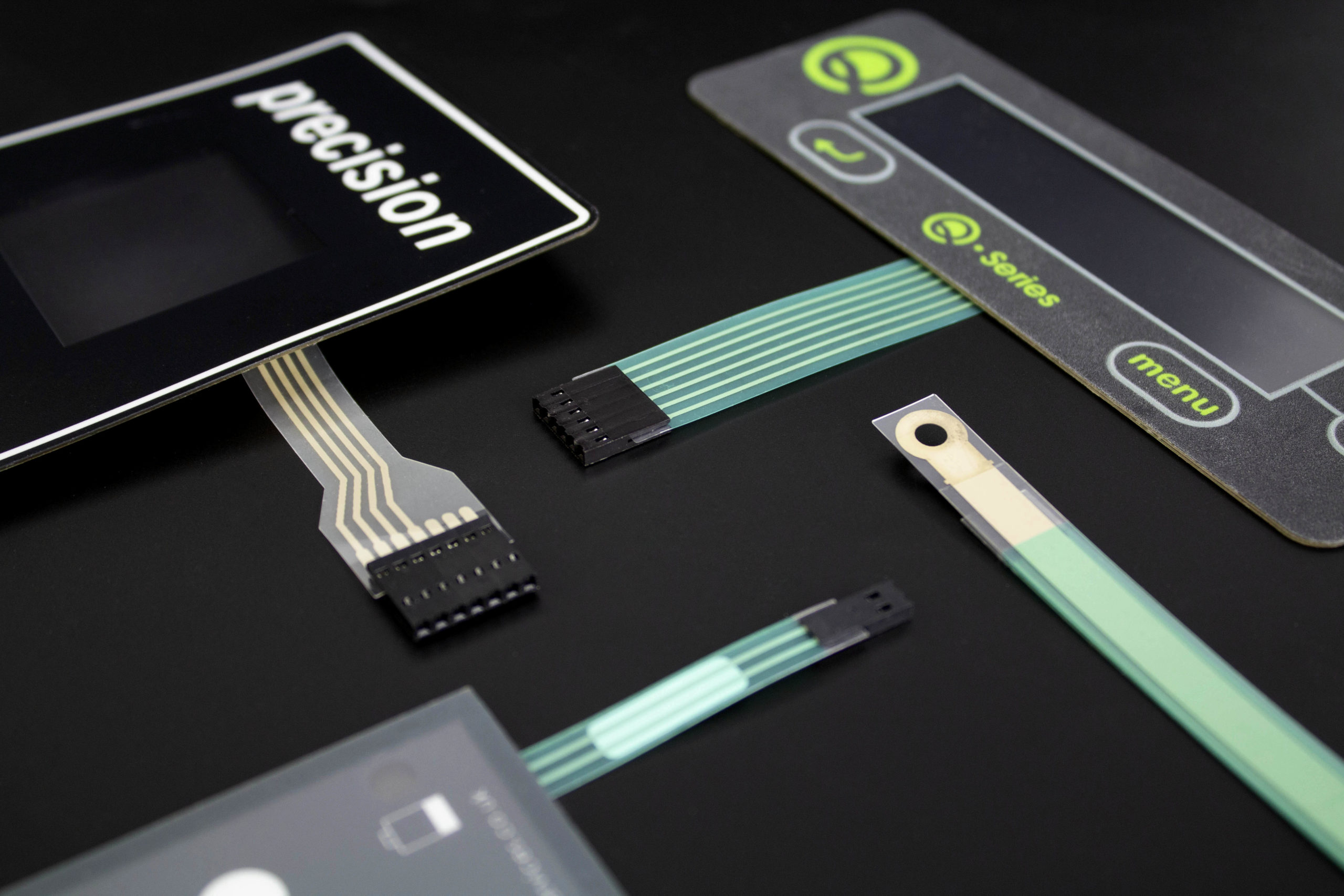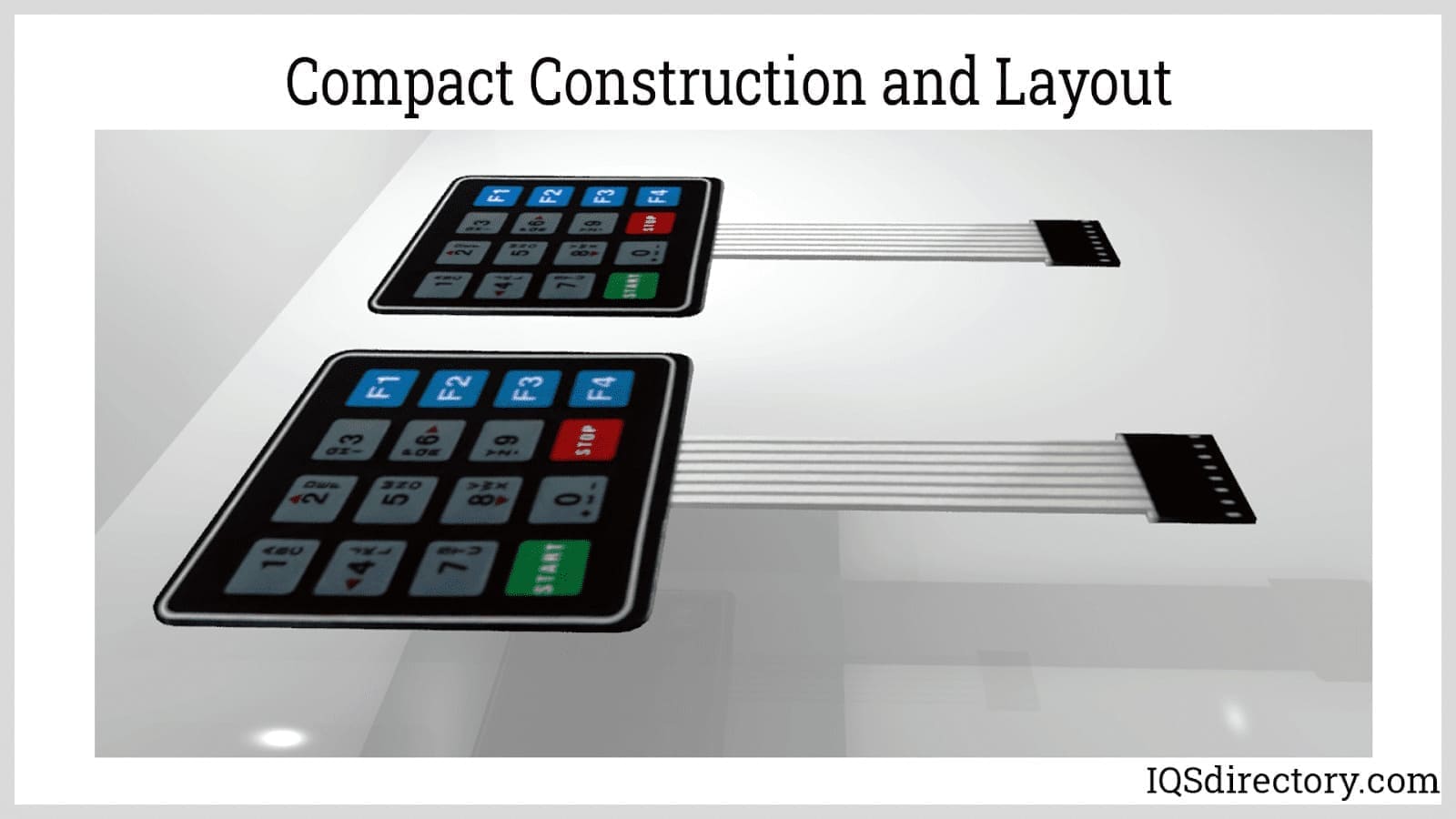How membrane switch is critical in aerospace control systems
Recognizing the Significance of Membrane Change in Modern Electronics
Membrane buttons are indispensable parts in contemporary electronic devices. They offer a mix of functionality and design that boosts user interaction. Their resilient and lightweight nature makes them ideal for different applications. As industries evolve, the need for personalization and progressed features expands. Comprehending exactly how membrane switches over contribute to innovation discloses their relevance in shaping the future of electronic devices. What lies in advance for this innovation?
The Basics of Membrane Layer Switch Modern Technology
Usually neglected, membrane layer switch modern technology plays a necessary function in the modern-day electronics landscape. These devices, composed of numerous layers, serve as customer interfaces for various digital products, varying from house devices to medical equipment. A typical membrane switch is composed of a graphic overlay, a spacer layer, and a circuit layer, which are meticulously constructed to develop a functional interface.When pressure is related to the overlay, the circuit layer is completed, allowing signals to be transferred to the tool. This technology is understood for its convenience, enabling personalization in performance, style, and form to fulfill specific user requirements. Furthermore, membrane layer buttons are light-weight and thin, making them appropriate for applications where area is a costs. Their sturdiness and resistance to ecological aspects better boost their allure, guaranteeing they can hold up against severe conditions while maintaining functionality. In general, membrane switch innovation is indispensable to developing straightforward and efficient digital devices

Secret Advantages of Membrane Switches Over
Membrane layer changes offer several vital benefits that make them a recommended selection in various digital applications. Their design permits for a compact type element, enabling manufacturers to develop smooth and light-weight tools. In addition, membrane layer switches are immune to dirt, wetness, and chemicals, which boosts their longevity and durability sought after atmospheres. The tactile responses supplied by these buttons can enhance customer experience, making them intuitive and simple to operate.Furthermore, membrane buttons can be customized with varied graphics and colors, allowing for unique branding chances. The production procedure is usually cost-effective, specifically for high-volume production, as it minimizes setting up time and simplifies layout. Membrane switches call for marginal upkeep, adding to lower overall operational expenses. These benefits highlight their growing popularity in contemporary electronics, where reliability and straightforward interfaces are necessary.

Applications Across Different Industries
The adaptability of membrane layer switches over enables their extensive fostering throughout different industries. In the medical field, they are typically utilized in diagnostic tools and patient monitoring systems, using a long lasting user interface immune to contaminants. The vehicle industry uses membrane layer switches for control panel controls, enhancing individual experience with streamlined designs that withstand extreme conditions. In consumer electronic devices, they act as control board for devices such as microwaves and coffee machine, providing an user-friendly interface that is simple to clean. The aerospace sector utilizes membrane layer buttons in cockpit controls, where dependability and room efficiency are extremely important. Additionally, the industrial field leverages these switches in machinery and control systems to ensure durable operation popular settings. This wide variety of applications emphasizes the adaptability of membrane buttons, making them essential parts in boosting functionality and individual communication throughout varied technical landscapes.
Customization and Design Flexibility

Future Trends in Membrane Switch Development
Arising fads in membrane layer button advancement suggest a growing emphasis on enhanced functionality and integration with clever modern technologies. As customer need for a lot more advanced electronic devices rises, suppliers are concentrating on developing membrane layer changes that not only offer standard operational roles but also incorporate features like touch level of sensitivity, backlighting, and haptic feedback.Furthermore, advancements in products are expected to improve resilience and ecological resistance, making membrane layer changes suitable for varied applications in markets such as healthcare, auto, and consumer electronics. The combination of capacitive touch innovation is most likely to end up being more widespread, permitting sleeker designs and enhanced user interfaces. membrane switch.Additionally, the surge of the Internet of Points (IoT) is triggering the growth of membrane switches over that can interact wirelessly with various other gadgets, boosting interconnectivity. Generally, the future of membrane switch modern technology appears promising, driven by advancement and the pursuit of easy to use solutions
Often Asked Questions
Exactly How Do Membrane Layer Changes Contrast to Conventional Mechanical Buttons?
Membrane switches, being extra space-efficient and providing a streamlined design, contrast with typical mechanical switches that supply responsive feedback. The previous often feature personalized graphics, while the last usually assure resilience and dependability in numerous applications.
What Materials Are Commonly Utilized in Membrane Change Production?
Membrane buttons are normally created using materials such as polyester, polycarbonate, and printed conductive inks. These materials give versatility, responsiveness, and resilience, making them ideal for various applications in electronic devices and interface.
Can Membrane Changes Be Repaired or Reused?
Membrane layer buttons can commonly be fixed, especially if minor issues emerge, such as glue failing or surface damage. Nonetheless, full reuse is commonly restricted because of wear and possible destruction of materials over time.
Just How Do Ecological Elements Influence Membrane Switch Efficiency?
Environmental variables, such as moisture, direct exposure, and temperature level to chemicals, greatly affect membrane layer switch efficiency. Extreme problems can lead to deterioration, affecting responsiveness and durability, ultimately jeopardizing the capability of the gadget in numerous applications.
What Is the Common Life-span of a Membrane Change?
The regular lifespan of a membrane layer button typically ranges from 1 to 5 million actuations, relying on factors such as usage regularity, environmental conditions, and the products made use of in manufacturing, impacting longevity and performance longevity. A regular membrane switch consists of a visuals overlay, a spacer layer, and a circuit layer, which are diligently assembled to produce a practical interface - membrane switch.When stress is used to the overlay, the circuit layer is completed, allowing signals to be transferred to the gadget. The tactile feedback offered by these buttons can boost customer webpage experience, making them easy and user-friendly to operate.Furthermore, membrane layer switches can be personalized with diverse my link graphics and colors, permitting for special branding chances. As consumer need for much more sophisticated digital gadgets rises, makers are concentrating on developing membrane layer switches that not just serve fundamental functional duties yet additionally integrate attributes like touch level of sensitivity, backlighting, and haptic feedback.Furthermore, advancements in materials are anticipated to boost durability and environmental resistance, making membrane layer switches over ideal for varied applications in markets such as health care, automobile, and consumer electronics. The assimilation of capacitive touch modern technology is most likely to end up being more prevalent, permitting for sleeker layouts and enhanced user interfaces.Additionally, the rise of the Net of Points (IoT) is triggering the development of membrane layer changes that can interact wirelessly with other tools, improving interconnectivity. Membrane buttons, being a lot more space-efficient and using a smooth design, comparison with standard mechanical switches that offer responsive responses